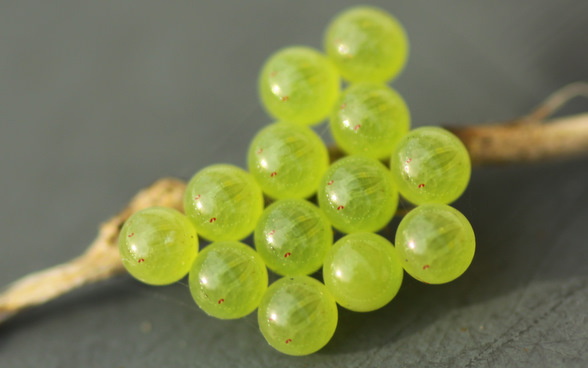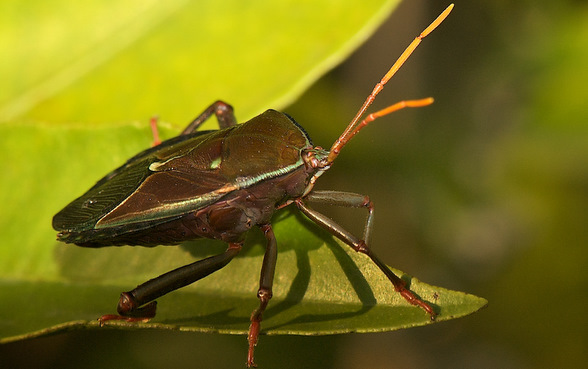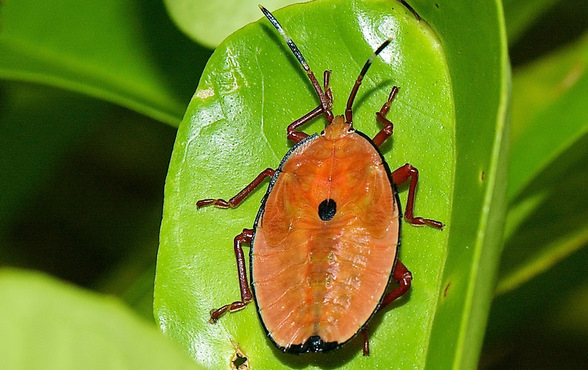Behaviour
Diet
Sap from citrus plants, including orange, lemon and lime trees, which it sucks through its tube-like mouthparts. It may also feed on the fruit and flowers of these plants.
Flight
A strong flyer.
Breeding
After mating, females lay eggs on the underside of host leaves, and the bright green eggs hatch into baby bugs (nymphs) about one week later.
Field Guide
Improve your identification skills. Download your Bronze Orange Bug field guide here!




